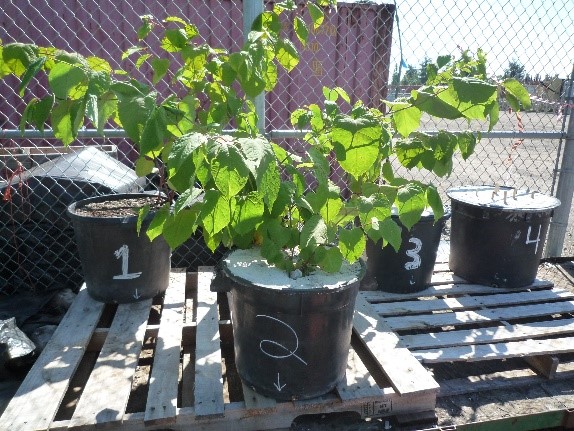Invasive Species Round Table
Want to learn more about the invasive plants in our area and what to do about them? Great! Join us in person or virtually on October 5th from 6pm to 8pm for our Invasive Species Round Table. Be sure to bring questions on the weeds that you want to know more about, there is no itinerary. Sign up for the exact meeting location or Zoom link on our Event Brite page.
Japanese Knotweed (Fallopia japonica)
Fall is here and that means it is knotweed season! Our crews are hard at work battling knotweed along the East Fork Lewis River and Salmon Creek watersheds. Need a knotweed refresher? Look no further friend.
Japanese knotweed (Fallopia japonica) is an invasive species that has been in the Pacific Northwest since 1970’s. Since it is not native to our area, it has very few predators and pathogens, which allows it to grow and spread very aggressively. These weeds can grow 6-8 feet tall, with light green leaves on stems that grow in a zig-zag pattern and have reddish purple bands at the base of the stems. Leaves are spade shaped and 4-6 inches long. The plants die back every year, but come spring they send up shoots that can grow up to 4 inches a day! The incredibly fast growth can be attributed to the rhizomes, a horizontal underground stem that sends out roots, similar to a bulb. Japanese knotweed grows so quickly, it outcompetes the native plants in the area excluding everything else from growing, including new trees. This effects all parts of the ecosystem, depriving native organisms of the myriad of ecosystem services provided by a more diverse array of native plants. To make matters worse, knotweed can damage building foundations and increase erosion along stream banks. It you see knotweed please report it on EddMaps or your favorite invasive species reporting application.
Still unconvinced of knotweed’s destructive power? We collected knotweed rhizomes, planted them in pots and then poured concrete 2 inches thick on top of them. And well…


